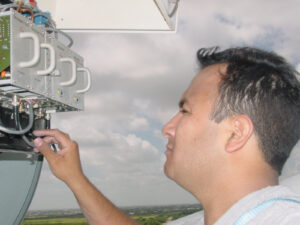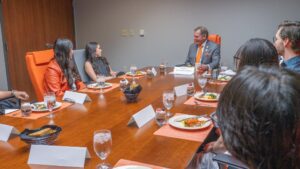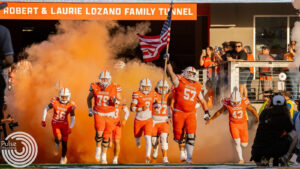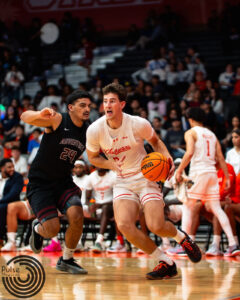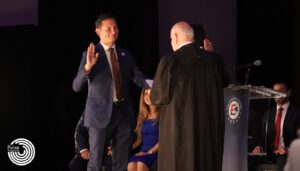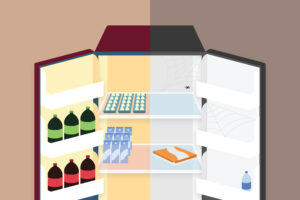The Superhero Project
Cavalry building was built in 1868, and it currently houses the Office of Student Life. It has been home to several organizations throughout its life, such as The Center for Advanced Radio Astronomy (CARA) and The Center for Gravitational Wave Astronomy (CGWA). It has also been the home of the University of Texas at Brownsville Police Department. Joe Castillo/Pulse
The Superhero Project leads an effort at UTRGV to offer students training on being an active bystander. Gone are the days when standing on the sidelines is an appropriate reaction to dangerous behaviors that can harm someone. The project’s goal is to educate students to refrain from deferring responsibility during a situation and to take the initiative.
Diego Martinez, the graduate intern for the superhero project in the Office of the Dean of Students, plays an active role in coordinating the project’s efforts as they explore an effective way to provide presentations amid the pandemic and online learning.
1. Which presentation has been well received and what does it entail?
Martinez: “The Superhero Projects’ most requested presentation would have to be our Active Bystander Presentation. It is here where we go over not just our superhero mission goals, but we give students the skills, resources, and guidance to changing the social norm. The superhero’s mission is for all Vaqueros to recognize, choose, and act when we are confronted with problematic situations. Being an active bystander is part of being a member of the UTRGV community. We all have an important role in preventing harm to others.”
2. How has the pandemic affected giving presentations?
Martinez: “The pandemic, in all honesty, caused a sort of setback when giving presentations. Usually, in-person presentations are a lot easier since the class is already in session and we just take over. Post-pandemic we are still in the works of finding the best way to be able to draw crowds, collaborate with organizations and be able to enter the classroom again, which would be via Zoom.”
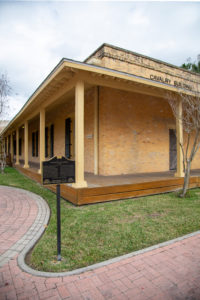
3. What is the project’s greatest achievement?
Martinez: “On Nov. 5, 2018, the Superhero Project was nominated and won the “Best Practices/ Institutional Impact Award” from the National Behavioral Team Association. This award is given to recognize a practice or program that can be modeled by other institutions as a best practice and has been shown to have a significant evidence-based impact on the originating institutions. This award was a proud accomplishment for all of us since it was a huge recognition and validated all our hard work. It gave us a boost of encouragement to continue spreading our message.”
4. How can students get involved and what are the benefits?
Martinez: “Our organization is run by student employees, it is a peer-to-peer educator program with the supervision of UTRGV staff, but students can always request presentations to be delivered for their organizations or classrooms. If need be, we can always create a new presentation to better suit the needs of the student and or students. They can also contact one of our three peer educators to learn more. The benefits of these presentations would be that all our information comes directly from the Student Handbook and other credible sources that can truly help the student body with many different problems. A good amount of our information isn’t known by the student body and once learned about can make a difference in their college experience.”
5. Why does UTRGV want to have this initiative?
Martinez: “This university-wide initiative allows all Vaqueros to have the knowledge and be empowered to be an active bystander in the face of adversity. This initiative continues to reach students of all grade levels throughout the university, educating them on the gray areas of higher education. [The Superhero Project offers presentations on] academic integrity issues to alcohol regulation on campus and any student/professor issues. With this transition to online learning, the knowledge of the policy on academic integrity and your power as a student has never been more valuable since it’d help in creating a smooth experience for everyone.”
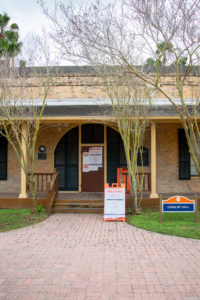
6. What would you say to someone who doesn’t know what the superhero project is?
Martinez: “The Superhero Project is an active bystander initiative on campus meant to persuade and educate students to be able to be the active bystander in most situations. It is a student ran program meant for students.”

